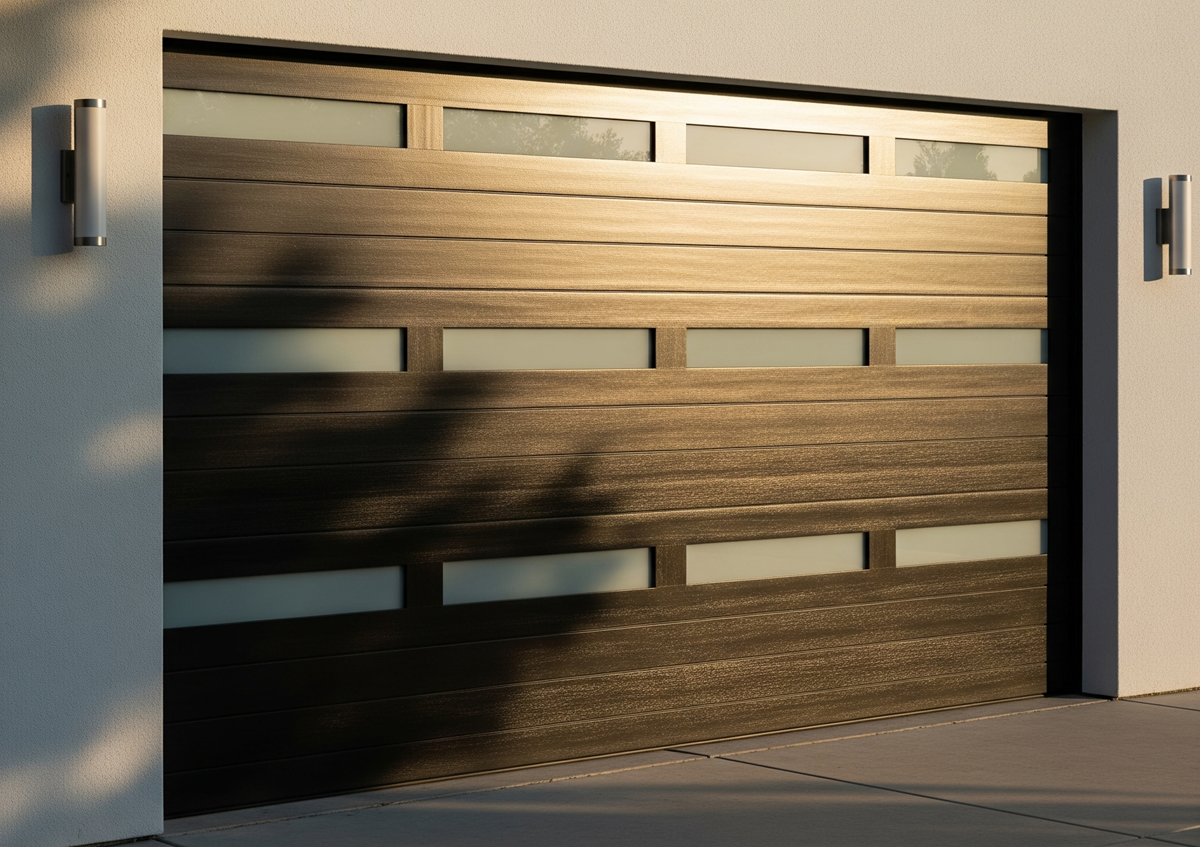A garage door may look like just another part of your home’s exterior, but in reality, it plays a much bigger role than most homeowners realize. It’s not just a slab of metal, wood, or composite that opens and closes—it’s your home’s guardian, design statement, and hidden energy manager.
From enhancing curb appeal to lowering utility bills, the garage door is an underrated yet vital investment. Think of it as the handshake of your home; it creates the first impression, sets the tone, and quietly protects what matters most.
The Role of Garage Doors in Modern Homes

Function Beyond Storage
Garages today are no longer just car shelters. Many families transform them into multi-use spaces:
- Workshops for DIY projects.
- Home gyms with fitness equipment.
- Entertainment zones or “man caves.”
- Small offices for remote work.
With these diverse uses, the garage door impacts comfort, noise control, and even the health of items inside—making its quality more important than ever.
Architectural Significance
Real estate studies show that the garage door can take up 30–40% of a home’s façade. A mismatched or worn-out door can ruin curb appeal instantly. On the other hand, a stylish, well-chosen door can create architectural harmony—complementing rooflines, siding, and window trims to elevate the entire look of the property.
Security & Safety
First Line of Defense
Your garage isn’t just for cars; it often contains bicycles, power tools, and even direct access to your house. Burglars know this, which makes a strong, secure garage door your first defense against intrusion. Reinforced steel, tamper-resistant locks, and smart access systems drastically cut down break-in risks.
Protecting Children and Pets
Modern garage doors follow strict UL 325 safety standards, which require auto-reverse technology and motion sensors. This means if anything crosses the door’s path—whether a toddler chasing a ball or a cat darting underneath—the door immediately stops and retracts.
Advanced Security Features in Modern Doors
Today’s premium garage doors feature:
- Rolling code technology (changes the code with each use to prevent hacking).
- Biometric access (fingerprint or face scan).
- Smartphone alerts when the door opens unexpectedly.
- Battery backups to keep doors operational during power outages.
Curb Appeal & Design Impact
Garage Doors as a Visual Anchor
Your front yard and garage create the visual handshake with visitors. If your garage door is outdated, dented, or mismatched, it drags down your home’s entire look—even if everything else is pristine.
Matching with Trim, Siding, and Accents
Coordinating colors and finishes is crucial. For example:
- White siding + black accents → matte black garage door = bold contrast.
- Brick homes → wood-toned or carriage-style doors bring balance.
- Modern minimalist homes → glass-paneled or flush steel doors complete the sleek look.
Popular Design Styles
Traditional Charm
Raised panels, carriage-house doors, and muted neutrals fit timeless exteriors.
Modern Minimalism
Flat-panel doors with frosted glass inserts and metallic finishes highlight contemporary design.
Rustic Warmth
Cedar, oak, or wood-look steel gives farmhouse and cottage homes a cozy, handcrafted appeal.
Energy Efficiency
Insulation and Climate Control
Garage doors often have R-value ratings (a measure of insulation). The higher the R-value, the better the insulation. A standard steel door may have an R-value of 6, while high-end insulated models can reach 18 or more.
Reducing Energy Bills
Poorly insulated garages leak heat in winter and trap humidity in summer. That means your HVAC works overtime. Studies show insulated garage doors can reduce annual energy costs by 10–20%, especially if the garage is attached to the house.
Importance in Tropical Climates Like Aceh
In hot, humid areas, a good garage door prevents your space from becoming a giant heat box. This not only protects your car battery and electronics but also keeps pests, mold, and dust at bay.
Functionality & Convenience
Smart Technology Integration
New garage doors sync seamlessly with Google Home, Alexa, or Apple HomeKit. You can control them with voice commands, geofencing, or even set them to close automatically when you drive away.
Remote Access and Scheduling
Apps allow homeowners to:
- Open doors for package deliveries.
- Schedule automatic closings.
- Receive notifications if the door is left open.
Noise Reduction Benefits
Belt-driven openers and insulated doors significantly reduce noise, which is a game-changer if your garage is under or beside bedrooms.
DIY & Design Potential
Custom Paint Treatments
You can personalize a garage door with UV-resistant paints, stencils, or even murals. Many homeowners now match garage doors with seasonal palettes—earth tones in fall, lighter hues in summer.
Seasonal Design Shifts
Garages are becoming a canvas for celebration. Holiday wreaths, magnetic decals, or subtle LED uplighting can turn the garage into a festive highlight.
Hardware and Accessory Upgrades
Adding decorative hinges, handles, or even barn-door accents transforms plain garage doors into statement pieces.
Garage Door Materials: Pros and Cons
Steel Doors
- Pros: Durable, affordable, low maintenance.
- Cons: Can dent, may require insulation.
Wood Doors
- Pros: Natural beauty, customizable.
- Cons: Expensive, requires frequent refinishing.
Aluminum and Glass Options
- Pros: Lightweight, sleek, modern.
- Cons: Less insulating, prone to scratches.
Pairing Garage Doors with Architectural Styles
- Colonial homes → paneled or carriage-style.
- Modern houses → glass-paneled, flush steel.
- Farmhouse/Rustic → wood-look or barn-style.
The right pairing enhances the authenticity of your home’s architecture while the wrong choice feels jarring.
How Garage Doors Influence Home Value
According to the 2024 Cost vs. Value Report, garage door replacement ranks among the top 3 ROI projects, with homeowners recovering up to 102% of the investment upon resale. Simply put, upgrading your garage door often pays for itself.
Maintenance Tips for Long-Lasting Doors
- Inspect: Look for cracks, rust, or imbalance.
- Lubricate: Rollers, hinges, and tracks at least twice yearly.
- Clean: Wash panels with mild soap to prevent corrosion.
- Call professionals: For spring replacement or motor issues—these can be dangerous DIY projects.
Cost Considerations: Budget vs. Premium Options
- Budget steel doors: $500–$1,500.
- Mid-range insulated steel or faux-wood: $1,500–$3,000.
- Custom wood or high-end glass: $4,000–$10,000+.
Factor in installation costs, warranties, and potential maintenance when budgeting.
Garage Door Trends in 2025
- Eco-friendly designs → recycled steel, reclaimed wood.
- Smart automation → AI learning patterns of use.
- Bold colors → navy, matte black, deep green.
- Mixed materials → wood + steel hybrids for strength and style.
Practical Tips for Choosing the Right Garage Door
- Consider how you use your garage (gym vs. car storage).
- Match the climate (insulation in humid/hot vs. durability in snowy).
- Balance style and budget—choose something timeless over trendy if resale value matters.
Conclusion
The garage door is more than an entryway—it’s a shield, a design centerpiece, and an investment. Whether you’re focused on security, aesthetics, or energy savings, the right garage door enhances daily living while protecting your future. So next time you hit that opener button, remember: your garage door is quietly working harder for you than you think.
FAQs (Expanded)
1. How often should I maintain my garage door?
Every 6 months. Regular checks prevent costly breakdowns.
2. Which material lasts the longest?
Steel (with proper insulation and rust protection) often lasts 20–30 years.
3. Can I automate an old garage door?
Yes, with retrofit smart openers, but compatibility depends on the model.
4. Are wood-look steel doors convincing?
Absolutely—modern finishes replicate wood grains so closely that most people can’t tell the difference.
5. What’s the average lifespan of a garage door opener?
Around 10–15 years, depending on use and maintenance.


